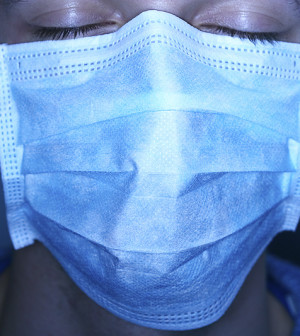- Understanding the Connection Between Anxiety and Depression
- How Daily Prunes Can Influence Cholesterol and Inflammation
- When to Take B12 for Better Absorption and Energy
- Epsom Salts: Health Benefits and Uses
- See What Saffron Can Do for Sleep and Heart Health
- 6 Common Mistakes to Avoid Before Your Physical
- Can Sweating Really Help You Beat a Cold?
- Strengthening Your Relationship: Practical Strategies
- Skip Storing This Everyday Product in the Fridge Door
- Green Tea + B3 Pairing May Boost Brain Health
More Evidence Environmental Exposures Contribute to Autism


A large U.S. study suggests environmental pollution might be contributing to autism risk, although the specific culprit toxins remain unknown.
Researchers analyzed medical records and found a correlation between U.S. counties’ autism rates and their rates of genital birth defects in boys, which could be a sign of some common environmental contributors.
However, the findings, which were reported March 13 in the journal PLoS Computational Biology, do not prove that any particular environmental exposure directly raises the risk for the developmental disorder, experts said.
There’s no “smoking gun,” said Alycia Halladay, senior director of environmental and clinical sciences for the advocacy group Autism Speaks.
“This study was not designed to figure out what the [environmental] factors are,” said Halladay, who was not involved in the research.
Still, she said, experts believe autism arises from a combination of genetic vulnerability and any number of environmental exposures. Some suspects include infections such as flu during pregnancy, certain prescription drugs taken during pregnancy and environmental toxins.
These latest findings support the “scientific agreement that it’s a mix of genes and environment,” Halladay said.
The lead researcher on the study agreed. “Both genes and environment are important,” said Andrey Rzhetsky, a professor of genetic medicine at the University of Chicago.
The task ahead, Rzhetsky said, is to figure out which environmental exposures matter.
Autism refers to a collection of disorders, usually diagnosed during childhood, that affect language and social skills.
For the study, Rzhetsky’s team analyzed nearly 100 million U.S. health insurance claims for a county-by-county look at rates of autism and intellectual disability. They also examined rates of genital malformations in boys — such as micropenis, undescended testicles and hypospadias (in which the urethral opening is on the underside of the penis).
Those genital malformations were used as an indicator of parents’ exposure to environmental pollutants, Rzhetsky said. The exact causes of those birth defects are not clear, but some studies have suggested that certain environmental toxins — including pesticides and lead — might play a role, he said.
In this study, county rates of genital birth defects ranged from none to just over 2 percent. Overall, the researchers found, for every 1 percent increase in those birth defects, the rate of autism rose by close to 300 percent.
Even accounting for county demographics, a strong link existed between rates of genital defects and autism, Rzhetsky said.
But the reasons for the correlation aren’t clear. Genes could play some role, Rzhetsky said, and so could environmental factors other than pollutants.
Halladay said endocrine disruptors — chemicals found in plastics, food cans and other everyday products — have been linked to genital birth defects. But so far, researchers haven’t found a connection to autism risk.
On the other hand, some studies have found a link between high exposure to air pollution during pregnancy and an increased autism risk, Halladay said.
Researchers continue to look for the environmental players in autism, Halladay said. Autism Speaks has a program that funds research on the environmental factors — including toxic exposures and nutrition during pregnancy — that might affect autism risk.
Rzhetsky said he hopes his team’s findings help fuel the interest in that type of research. “There is a lot of research focused on the genetics,” he said. “But environment plays a big role.”
But chemicals in the environment are only one potential reason autism rates vary across the United States.
Rzhetsky’s team also found lower rates of autism in states where regulations require a doctor’s diagnosis of autism before kids can qualify for special education.
Halladay said the finding is consistent with past studies suggesting that differences in diagnosis help explain regional differences in autism rates.
A 2012 study from the U.S. Centers for Disease Control and Prevention found that one in 88 U.S. children had an autism spectrum disorder — up almost 25 percent from just a few years before. But the rate varied widely, from one in 47 in Utah to one in 210 in Alabama.
Experts speculated that the national increase had a lot to do with better detection, and that differences in awareness and autism services might explain the regional differences.
More information
Autism Speaks has more on environmental factors and autism.
Source: HealthDay
Copyright © 2026 HealthDay. All rights reserved.










